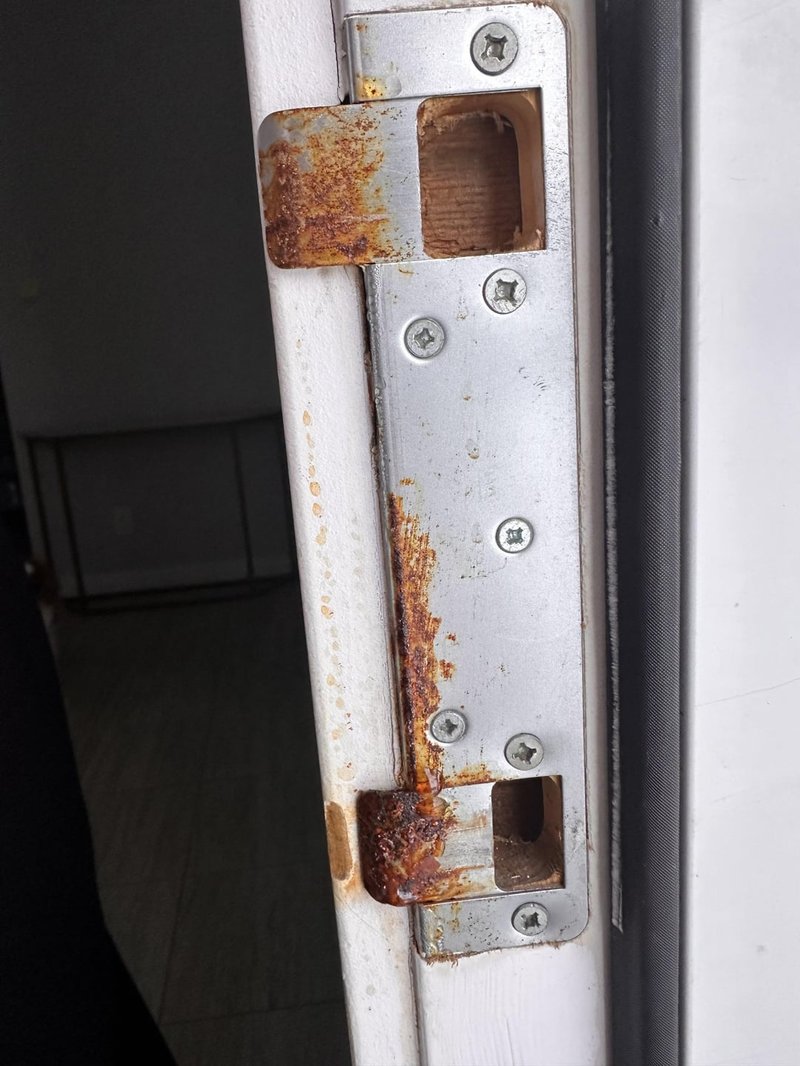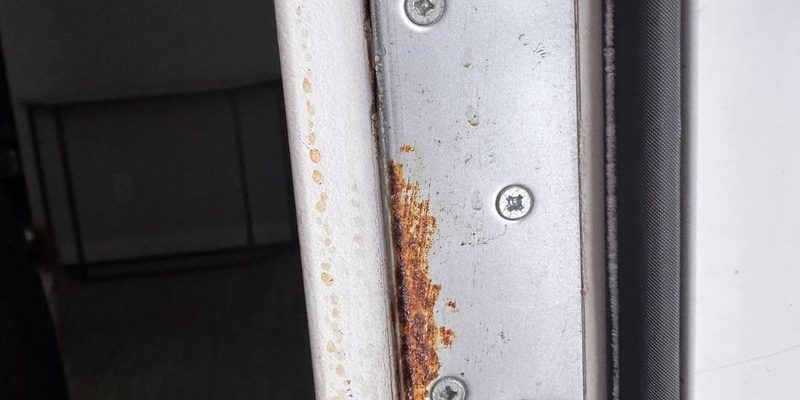
Here’s the thing: A deadbolt that won’t retract completely isn’t just an inconvenience. It can affect your home’s security and make you second-guess every time you close up for the night. Whether you have a classic Schlage, a smart Kwikset, or even a budget off-brand lock, this problem shows up across the board. Let me explain why it happens, and more importantly, how to fix it step by step—no lockpicking kit required.
Common Causes of a Stuck Deadbolt
Before you dive into screwdrivers and graphite sprays, it helps to understand why deadbolts get stuck in the first place. Deadbolts are simple in theory, but several parts have to line up just right for the bolt to retract smoothly.
Misalignment is the top culprit. Over time, your door or frame can settle, swell, or warp—especially if you live somewhere with big weather swings. Even a fraction of an inch can stop the deadbolt from lining up with the strike plate, leaving it partially extended.
Lack of lubrication is another major cause. Most people never think to oil their lock, but home hardware dries out, especially with frequent use or after a few rainy seasons. When internal parts get sticky, the bolt may not slide all the way back, no matter how hard you turn the key or knob.
Worn or damaged components inside the lock are also likely. Springs weaken, pins or cams can bend, and even high-end brands like Schlage or Kwikset aren’t immune after years of daily use. Sometimes, a deadbolt that won’t retract is a hint your lock is on its last legs.
Checking Door Alignment and Strike Plate Issues
Now, let’s start troubleshooting with the easiest and most common fix: alignment. If your door or frame has shifted, the deadbolt might hit the edge of the strike plate and refuse to retract fully.
Try this: With the door open, extend and retract the deadbolt. If it works fine in the air but not when closed, the problem is almost always in the alignment—not the lock itself.
- Look at the strike plate on the door frame. Is there visible wear, or does the bolt seem to miss the opening?
- Check for paint buildup or debris in the strike plate hole. Even a little can block the bolt’s full movement.
- If the fit is tight, you might need to file down the edges of the strike plate or slightly reposition it by loosening the screws and adjusting.
A misaligned strike plate is the number one reason a deadbolt won’t retract completely, especially after new weatherstripping or painting.
For a stubborn deadbolt, try shutting the door gently and engaging the lock while applying a bit of upward or downward pressure on the door. If the bolt retracts now, it’s a sure sign of alignment trouble.
How to Lubricate a Sticky Deadbolt
Stiff or slow-moving deadbolts are often just crying out for lubrication. Honestly, skipping this step is like ignoring the oil light in your car—it might work for a while, but you’re risking bigger problems (and maybe a call to a locksmith).
To fix a sticky deadbolt:
- Use a graphite-based lubricant. Avoid anything greasy like WD-40, since it can attract gunk inside the lock over time.
- Shoot a small puff of graphite powder into the keyhole and onto the bolt mechanism where it slides in and out.
- Insert and turn your key or thumb-turn a few times to spread the lubricant.
If you spot visible dirt or sticky residue, you might want to gently clean out the keyhole first. Compressed air or a tiny brush can help here. For smart deadbolts, check the manual—some electronic models need specific maintenance routines and types of lube.
If your deadbolt moves smoothly with the door open but not closed—even after lubrication—circle back to checking the alignment.
Identifying and Fixing Internal Lock Problems
If you’ve ruled out alignment and lubrication, there’s a good chance the problem is inside the lock. Here’s where things get hands-on, but don’t worry—it’s less intimidating than it sounds.
First, remove the two screws holding the lock on your door. Carefully slide out both sides of the lock assembly and take a look at the internal parts. What are you looking for?
- Worn springs or bent cam pieces. If the bolt doesn’t move back when you turn the key or knob, a spring might not be doing its job.
- Broken key parts or debris. Occasionally, tiny pieces of metal or plastic break off inside the lock, blocking smooth movement.
- Misaligned tailpiece or actuator. This is the rod that connects your key or knob to the bolt. If it’s bent, loose, or out of sync, the bolt won’t retract as it should.
You might be able to carefully realign parts, clean out debris, or even swap in a replacement spring (if you’re handy and parts are available). If you see obvious breakage, though, replacing the deadbolt is usually the safest bet.
Don’t forget: If your deadbolt is still under warranty, tampering with the internal parts might void coverage. Sometimes, reaching out to the brand’s support line (like Schlage or Kwikset) can score you a free replacement or repair instructions.
Dealing With Electronic or Smart Deadbolts
Let’s talk about electronic and smart deadbolts—think August, Yale, or Kwikset’s electronic line. These models add an extra layer of complexity to deadbolt troubleshooting, thanks to batteries, circuit boards, and code sync.
If your smart deadbolt won’t retract fully:
- Check the batteries first. Low battery power can mean the bolt doesn’t have enough juice to move all the way in or out. Replace them with fresh ones—even if the indicator light isn’t blinking yet.
- Reset or re-sync the lock’s internal code. Sometimes, a basic reset (usually a button combo or menu option) will re-pair the motors and fix bolt movement issues.
- Inspect for physical jams. Smart locks still have old-school moving parts inside. If something’s jammed, you might need to clean or lubricate just like with a manual deadbolt.
If none of that works, check the brand’s app or website for specific troubleshooting steps. Some have service codes you can enter, or diagnostic modes to help pinpoint problems.
Loose wiring is a sneaky problem with some electronic deadbolts—if you hear the motor whir but the bolt doesn’t retract, check the internal connections after removing the battery pack.
When to Replace Your Deadbolt
Sometimes, all the troubleshooting in the world can’t save a deadbolt that’s just too far gone. So how do you know when it’s time to retire your current lock and install a new one?
- Visible damage or breakage. If any part is cracked, bent, or broken (especially inside the locking mechanism), don’t risk a jam or home security issue—just replace the whole unit.
- Repeated troubleshooting failures. If you’ve adjusted the strike plate, lubed the lock, checked the alignment, and you’re still having problems? It’s probably not worth more time or effort.
- Outdated or unreliable technology. Older deadbolts (even from top brands) can wear out in ways you can’t easily see. If you’re constantly fussing with the lock, a modern, secure replacement is a smart move.
The good news? Replacing a deadbolt is a pretty basic DIY project. Universal deadbolts fit most standard doors, but if you’re working with a specialty brand or a smart lock, check compatibility with your door’s thickness and backset before buying anything new.
Tips for Keeping Your Deadbolt Working Smoothly
Prevention beats repair, every time. Here are a few simple habits that make deadbolt troubles a lot less likely:
- Lubricate once or twice a year. Mark your calendar to give your deadbolt a quick squirt of graphite powder before seasons change.
- Don’t slam the door. It’s tempting, but the jolt can slowly knock the frame out of alignment, especially with heavy doors.
- Check alignment regularly. If you replace weatherstripping, paint your door, or see daylight around the frame, double-check the bolt’s path.
- Replace batteries on schedule. For electronic deadbolts, don’t wait for them to die—fresh batteries mean consistent, reliable bolt movement every time.
If you’re renting or can’t make permanent changes, a little graphite and careful use go a long way. For homeowners, keeping an eye on door fit and hardware saves bigger headaches down the road.
What If My Deadbolt Still Won’t Retract?
Let’s be real—sometimes a deadbolt just refuses to play nice, and you’ve tried everything short of calling a locksmith. If you’re at that point, don’t force the key or knob, or you risk snapping it off (and making things even worse).
Instead:
- Double-check all the above steps calmly. Sometimes a tiny adjustment or another round of lubricant does the trick.
- If the lock is stuck halfway, try loosening the screws on the lock body a bit—sometimes pressure from overtightened screws can pinch the inner parts.
- If you’re locked out, a professional locksmith is your safest bet. Don’t use force—bashing or drilling can ruin your door and frame.
It’s frustrating, but sometimes expert help is just the fastest (and least expensive) way out in the long run—especially with complex or smart deadbolt issues.
Wrapping It Up: Securing Your Door, Stress-Free
Deadbolts seem simple, but lots of little things have to work just right for them to retract every time. Whether it’s a sticky, worn-out Schlage or a finicky smart lock from Yale, a few minutes of troubleshooting can usually save you a trip to the hardware store—or at least buy you some time to plan a proper replacement. Keep your lock clean, your strike plate lined up, and your batteries fresh, and that deadbolt will keep your front door—and your peace of mind—secure. If it still won’t retract completely, don’t sweat it: You’ve got a full list of things to check before reaching for the phone (or the crowbar).
